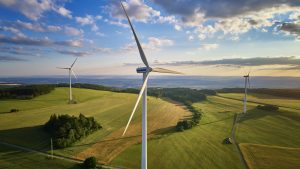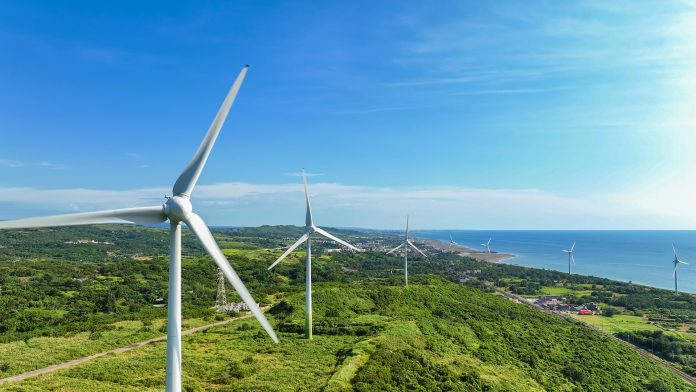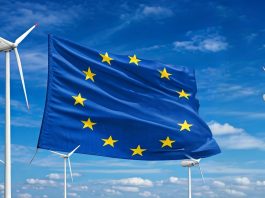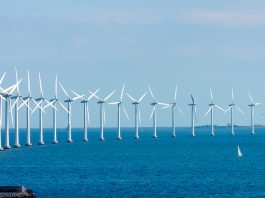Christoph Zipf, Spokesperson at WindEurope, stresses that EU governments must revitalise implementation in order to accelerate Europe’s wind industry.
As it stands, Europe is not building enough new wind turbines to reach its 2030 energy and climate targets. After several challenging years, the European wind energy supply chain has started to ramp up. The European Commission has tabled an excellent Wind Power Package in late 2023 – 15 immediate actions to strengthen Europe’s wind industry. Now, it’s up to European governments to implement these European Union (EU) rules on the national level. ‘Implementation’ might sound boring and dusty, but, for Europe’s wind industry, the timely and efficient implementation of the Wind Power Package might well be matter of survival.
The challenges Europe faces today – declining competitiveness, geopolitical uncertainties, and climate change – are significant. Wind energy is uniquely positioned to help tackle all three. It reduces fossil fuel imports, creates jobs, strengthens the industrial base, and plays a pivotal role in reducing carbon emissions. By fully embracing wind energy, Europe can bolster its energy independence, boost economic growth, and lead the global transition to clean energy.
And there’s great news: we don’t need much additional EU legislation to start a new wind energy boom across Europe.
In 2023, the European Commission tabled an excellent Wind Power Package with 15 immediate actions to strengthen Europe’s wind industry. The revised EU Renewable Energy Directive further made the deployment of wind energy a matter of overriding public interest. Now, the EU is switching to implementation mode.

Presenting his programme for the next five years to the European Parliament, European Commissioner-Designate for Energy and Housing Dan Jørgensen wrote: “implementation is central to European competitiveness.” Jørgensen is spot on. Yes, the next European Commission mandate will need to focus on implementation. And yes, Europe’s new rules on permitting, its electricity market design and its Grids Action Plan will help generate lots of cheap renewable electricity to boost the competitiveness of Europe’s businesses.
Europe’s wind industry at a crossroads
But Europe’s wind industry is at a crossroads. Europe built 6.4 GW of new wind farms in the first half of 2024. At this rate, it isn’t building enough new wind farms to meet its 2030 energy security and climate targets. The EU is projected to build 22 GW of new wind farms a year on average over 2024-30, with annual installations sharply rising towards the end of the decade. This puts the EU on track to have 350 GW of wind energy capacity by 2030: 296 GW onshore and 54 GW offshore. The EU wants 425 GW by 2030.
The European wind energy supply chain is doing its part. Our companies are currently investing more than €10bn in building new factories or expanding existing ones. 30 major factory investments include new production capacities for blades, towers, nacelles, offshore wind substations, cable, and grid equipment production. By 2025, the European supply chain is expected to have the capacity to manufacture 9.5 GW of offshore and 22.5 GW of onshore wind turbines annually.
The EU is supporting in this. The European Investment Bank has set up a counter-guarantee facility for wind energy manufacturing investments and the EU Innovation Fund has selected six wind energy manufacturing projects in its latest call for projects.
But international competition is growing. As things stand, nearly all the wind turbines built in Europe today are European wind turbines – produced by European manufacturers and assembled in Europe. But there is a very real risk that the expansion of wind the EU wants will be made in China, not in Europe. Chinese manufacturers are starting to win first projects in Europe now.
The European wind industry is already providing 370,000 jobs in Europe today. By 2030, this could grow to almost 600,000. But this big promise of new jobs and sustainable growth faces hurdles. European manufacturing capacity is not the problem here. It’s other challenges that are preventing the wind energy market from reaching its full potential and Europe from delivering the volumes needed to reach the 2030 targets.
This is where our dear implementation comes in: EU Member States must implement the excellent EU rules. They must adapt EU permitting rules, ensure grid connections are ready on time, improve the business case for new wind, and they must get the supporting infrastructure in place: ports, roads, vessels. They must ensure that implementation is done efficiently and effectively. There’s much on the line here: Europe’s clean technology leadership.
Electricity grids: Enable the massive deployment of wind
Electricity grids are rapidly becoming the number one bottleneck to the expansion of wind energy in Europe. The lack of robust grid infrastructure risks delaying in the green energy transition. Across Europe, investments in expanded and optimised grids of €584bn are required by 2030. The cheapest and cleanest electricity becomes worthless if it cannot be transported to the end consumer. The EU has put forward a Grids Action Plan. Governments must not waste any time implementing it!
Grid connection queues are growing. Across Europe, more than 500 GW of potential wind energy capacity in France, Germany, Italy, Spain, Poland, Romania, Ireland, Croatia, and the UK are waiting for an assessment of their application for a grid connection. Italy and the UK each have more than 100 GW of projects waiting. Speculative projects are clogging up the system. Today, it can take up to nine years to get a grid connection permit. Governments must implement effective filtering and prioritisation criteria to unlock the most promising wind energy projects and rapidly greenlight them.
Permitting: Make the overriding public interest count
Another key area requiring improvement is permitting. Long, complex permitting processes slow down wind farm development across Europe. As part of the latest Renewable Energy Directive revision, the EU has proposed various measures to resolve that.
This includes stricter permitting deadlines and, crucially, making the expansion of wind energy a matter of overriding public interest.
But nearly a year after the revised Renewable Energy Directive (REDIII) permitting deadline, implementation across the EU remains inconsistent. Germany has rapidly implemented the new measures and now leads with 4.7 GW of new wind permitted in the first half of 2024. Others fall behind. Take France with 750 MW and Sweden with close to no new projects. The European Commission has even initiated infringement proceedings against several other EU Member States for not implementing the new permitting provisions in time.
Faster permitting is crucial to unlocking the new wind volumes needed for 2030. This includes digitalising the overall permitting processes, establishing overriding public interest and providing efficient one-stop shops. This causes much implementation work for the Member States.
Business case: Move away from price-only auctions
Auction design is another crucial lever. Governments across Europe need to embrace non-price criteria in their auctions to ensure a balance between cost-efficiency and environmental, social, or industry political goals. The Netherlands serves as a positive example. They pioneered non-price criteria on biodiversity and energy system integration in their offshore wind auctions.
The EU Wind Power Package wants Member States to follow the Dutch example. Governments must act and improve their national auction designs. They must apply proper implementation, ensure that the auction prices reflect today’s market realities, and stay away from uncapped negative bidding.
Demand side: Electrify heating, transport, and industry
Europe is making quick progress in decarbonising the power sector, but other sectors of the economy are stalling. Here, we are still using fossil fuels – the gasoline in our cars, the gas in our boilers. The problem: electricity is still less than 25% of all energy consumed in Europe. This needs to change. Member States must ramp up their efforts to electrify transport, heating, cooling and industry.
Steel, cement, and chemicals are central to the production of modern wind turbines. We need to help them decarbonise – with finance and flexible state aid. It’s great that Dan Jørgensen pledged to present an Electrification Action Plan to help government deliver on this. The Plan cannot come early enough and must be sufficiently ambitious, aiming for 35% electricity in the energy mix by 2030. In the meantime, Member States have plenty of cross-sectoral Green Deal legislation to implement in order to boost electrification already today.
Supporting infrastructure: Prepare for the boom
Wind energy is not only the manufacturing of turbines. It is also about getting the supporting infrastructure in place. This includes ports, roads, and vessels. Europe will need to invest €9bn in its port infrastructure by 2030 to unlock the coming offshore wind boom. But ports and their hinterland connections – roads and bridges – are also key to the expansion of onshore wind. Many of the large wind turbine components are stored and handled in ports before being transported further land inwards. Next to the physical infrastructure investments, government will also need to invest in their human resources. The wind industry stands ready to generate hundreds of thousands of jobs across Europe, but we need education and training offers that ensure we have the skilled staff to match this job offering.
Growing geopolitical tensions make energy security an urgent priority. Cheap and home-grown renewables can deliver. The EU has understood this and wants to make wind energy a cornerstone of Europe’s green energy future. The proposed EU Clean Industrial Deal will enable European industries to reap all the benefits of wind energy generation. But the EU can only do so much. The ball is firmly in the court of the Member States now. To paraphrase Dan Jørgensen’s quote in the broadest sense: Europe’s industrial competitiveness will not least depend on whether Member States manage to make implementation easy, efficient and sexy.
Please note, this article will also appear in the 20th edition of our quarterly publication.









